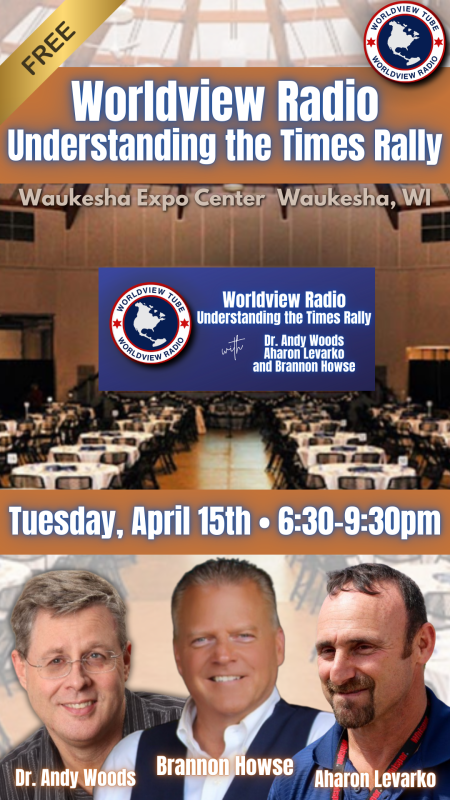Media Conceal True Nature of "Flash Mob" Racial Violence
Media Conceal True Nature of "Flash Mob" Racial Violence<?xml:namespace prefix = o ns = "urn:schemas-microsoft-com:office:office" />
By John T. Bennett
Relying on documents made available exclusively through a Freedom of Information Act request, we can add another face to the growing picture of racial "flash mob" violence in America. It is a face that the media have concealed from public view.
This writer was forced to use the local Freedom of Information Act (FOIA) to ascertain the facts about the racial identity of one of the victims of these attacks. The media concealed the identity of the white victim apparently because of misguided racial sensitivity.
What makes this even more startling is that it is just one of many examples of racial mob violence occurring around the country, without any comment from national figures such as President Obama or Attorney General Eric Holder. But if whites were attacking blacks in this manner, you can bet it would have already have become a national story worthy of comment from national political figures.
Consider these incidents:
· At the Wisconsin State fair, groups of black teens numbering anywhere from 25 to 100 "were targeting anyone who was white or appeared to look white," and beating them, according to the local police chief. At least 18 people were injured, and 30 have been arrested.
· In Denver, couples leaving restaurants were being attacked by a group of black men with baseball bats.
· A young white man named Carter Strange had his skull fractured by a mob in South Carolina. He was attacked at random while jogging.
· A young white man named Dawid Strucinski was beaten into a coma by a mob in Bayonne, NJ.
· Anna Taylor, Emily Guendelsberger, and Thomas Fitzgerald were beaten to the ground and stomped in separate Philadelphia flash mobs.
· "Every weekend in July," according to local news, "police have battled large, flash-mob beatings and vandalism" in Greensboro, NC.
· In a mostly-white suburb of Cleveland, witnesses reported large groups of young blacks walking through the streets, "shouting profanities and racial epithets," and one man was viciously beaten while leaving a restaurant with his wife and friends.
· A young white lady named Shaina Perry was taunted and beaten by a black mob in Milwaukee who remarked "Oh, white girl bleeds a lot."
The similarities among these attacks point to a trend: First of all, these are not run-of-the-mill crimes. They typically involve group attacks against defenseless, random victims who have no means to resist and did nothing to provoke their attackers. These flash mobs often stomp their victims even after they are down, as most of the news reports describe.
Then there are the racial similarities: The attackers are invariably black. Philadelphia's mayor conceded as much when he condemned flash mobs, addressing the rioters with the charge, "You damaged your own race." The victims are usually not black. Several qualifications are in order: It is clear that only a small number of black teens take part in these attacks. Blacks are more likely to be victims of violent crime than any other group due to black-on-black crime. Also, interracial crime is a fraction of all crime, and hate crime is an even smaller fraction of that. Nonetheless, these flash mobs are a social problem that needs to be addressed. If the races were reversed, we would be witnessing an outpouring of guilt of biblical proportions. Instead, the victims are white and we get an outpouring of ignominious silence. So far, precious few leaders in academia, politics, the legal system, or the media have spoken out directly against this troubling trend.
Far from being isolated incidents, violent flash mobs are part of an emerging social problem that turns the traditional story of American racism on its head. If opinion makers reported accurately about these flash mobs, most Americans would probably alter their views about racism and conclude that these flash mobs are the worst form of racial violence in our nation today. Not all of the flash mobs meet the strict criteria of a hate crime. However, they do represent a growing wave of racial violence.
The national media should acknowledge what a serious and potentially widespread social problem they are, but instead the press has concealed the racial aspect of this problem.
To take one particular example, in Chicago on June 14 of this year, the local media reported on a 15-year-old, without identifying his race, who was attacked and robbed by "a group of seven male teens," all "black." In a summer filled with mob violence, this story registered as another small blip in an alarming trend that has emerged across the country. However, the June 14 robbery was more troubling than most of the other flash mob attacks: One of the attackers that day had a gun.
Following their official policy of self-imposed PC censorship, the local media didn't mention the race of the victim. Thankfully, the Chicago Police Department replied to my Freedom of Information Act request and provided that information in a redacted version of the incident report. It should not surprise anyone that the victim on June 14 was white. (These FOIA documents are attached to this column).
I can hear the chorus of complaints asking, "Why does race matter?" That question is usually asked with a tone of consternation, as if the person asking the question has determined that race must not matter and is refusing to consider race.
'It's not about race!' some will say. People are people, and crime is about bad people doing bad things-or good, poor people whose social conditions drove them to beat people. But these mob attacks are most certainly about race, and there is only one specific type of person committing these attacks. In Chicago, and around the country, flash mob attacks have been committed by blacks, apparently without exception.
Not every interracial crime has racial significance. Sometimes a fight is just a fight, a robbery is just a robbery, a mob is just a mob. But when there is a trend of racial victimization and a stark racial component in the participants of the attacks, then there is racial significance. We are fully justified to be concerned with the racial aspect of flash mobs, given the larger context of the flash mob phenomenon in Chicago-to take only one example-this year.
The flash mobs in Chicago began with flash mob robberies in January when groups of teens shoplifted at three separate stores along Michigan Avenue. In February, Loyola University warned students and staffers about "flash mob offenders" stealing items from nearby stores. In April 2011, a group of 70 "youths" ransacked a McDonald's and "created a disturbance" according to a news report.
Then, on Memorial Day weekend, the cultural enrichment turned ugly. A witness told Chicago's NBC local affiliate that mobs of "animals," as the witness described them, "were being rude and abusive and throwing trash around and defecating
" Other witnesses reported that "gangbangers" were pushing people off their bikes.
In June, the attackers showed up armed. In robberies on June 5, between eight and 15 teens boarded a bus without paying and "began hitting people," according to the Chicago Tribune. Three of those teens were charged with armed robbery, one with unlawful use of a weapon.
The most publicized flash mob attacks took place when five non-blacks were attacked in one hour by a pack of 20 teens on the North Side. As of June 13, Mayor Rahm Emanuel said that over 30 people had been arrested in the various mob attacks that month. Then, on June 14, the white 15-year-old was robbed at gunpoint by a group of blacks.
Not far away, the flash mobs could have reached an awful crescendo in Peoria. On June 24, a mob of at least 50 blacks teens were stopping traffic in the street, and "running wildly through yards and porches" in a quiet suburban neighborhood in what one witness described as a "show of force." Another witness says that a black teen yelled out, "We're gonna kill all the white people. This is our neighborhood." In this context, a reasonable reporter would be acting appropriately to include the race of victims and attackers in group attacks.
However, when it comes to black-on-white crime, as Chicago Tribune editor Gerald Kern publicly admitted, "We do not reference race unless it is a fact that is central to telling the story." In other words, the Tribune will not reference race. How will we know if a fact is central to a story unless we have context? We'll never have context to understand racial violence if the media conceal racial facts. If we're not told the race of victims and attackers, we can't observe a pattern of behavior, and we will have no idea whether race is central to a story. The Tribune's reporting is thus an Orwellian void that leaves us all less informed, and less safe.
But this is not unique. The Washington Post, New York Times, and L.A. Times join the Tribune in admitting that they have, in effect, a policy of not reporting race.
Whether or not a fact is "central to a story" is naturally a value judgment that says as much about the ideology of an editor as it does about the facts of a story. Needless to say, when the race of mob violence victims is white, a liberal editor will usually not find that fact "central" to a story.
White victimization in racial violence is an inconvenient fact for those who are dedicated to social justice, a dogma based on faith in perpetual white guilt. Journalism departments play their part in maintaining the dogma. We're not going to remain addled with white guilt if we fully acknowledge anti-white crime. So liberals downplay white victims to maintain their traditional belief in monolithic white racism, the one tradition that liberals believe in maintaining.
If we are truly committed to "social justice," however, we must acknowledge that concealing the facts about racial violence and other social problems leaves us endangered and intellectually impoverished. Refusing to face facts will inhibit finding a solution to the problem, and virtually guarantee that the problem will only get worse.
John T. Bennett (MA, University of Chicago, MAPSS '07) is a veteran, writer, and law student at Emory University. His work appears at American Thinker and World Net Daily, among others. He can be contacted at [email protected]
Trending Stories
Latest
WE'RE A 100% LISTENER SUPPORTED NETWORK
3 Simple Ways to Support WVW Foundation
Make Monthly Donations
-or-
A One-Time Donation
-
Mail In Your Donation
Worldview Weekend Foundation
PO BOX 1690
Collierville, TN, 38027 USA -
Donate by Phone
901-825-0652









































